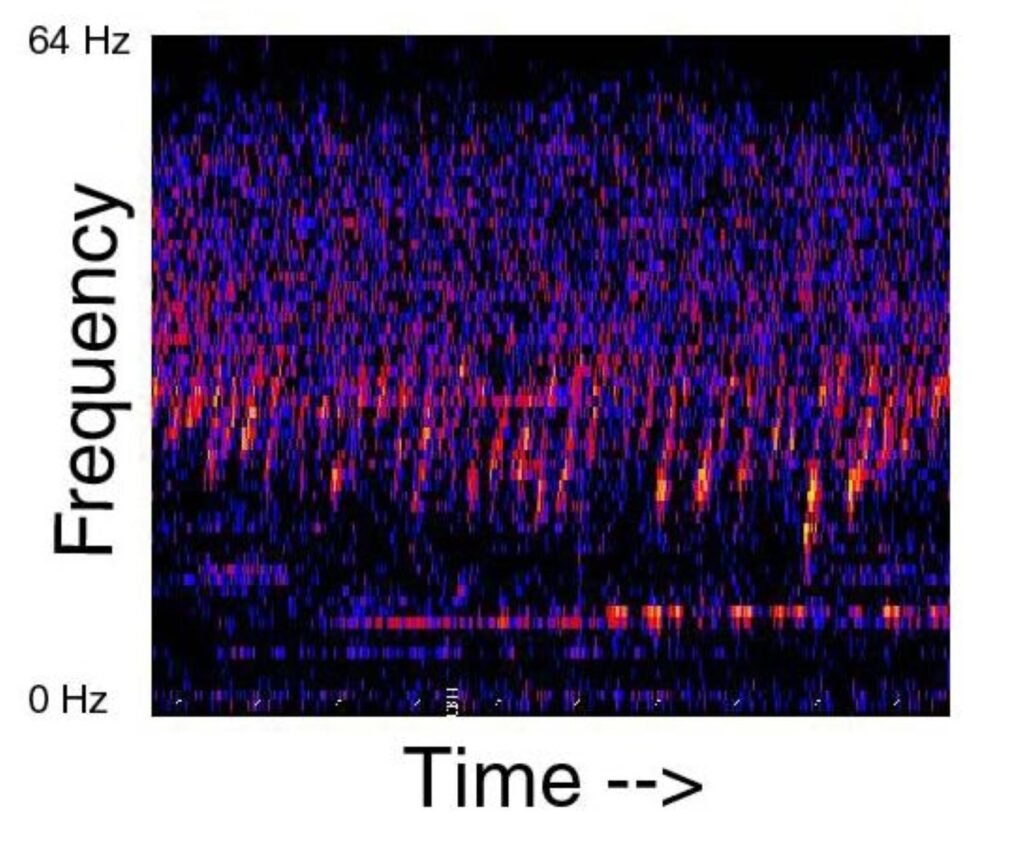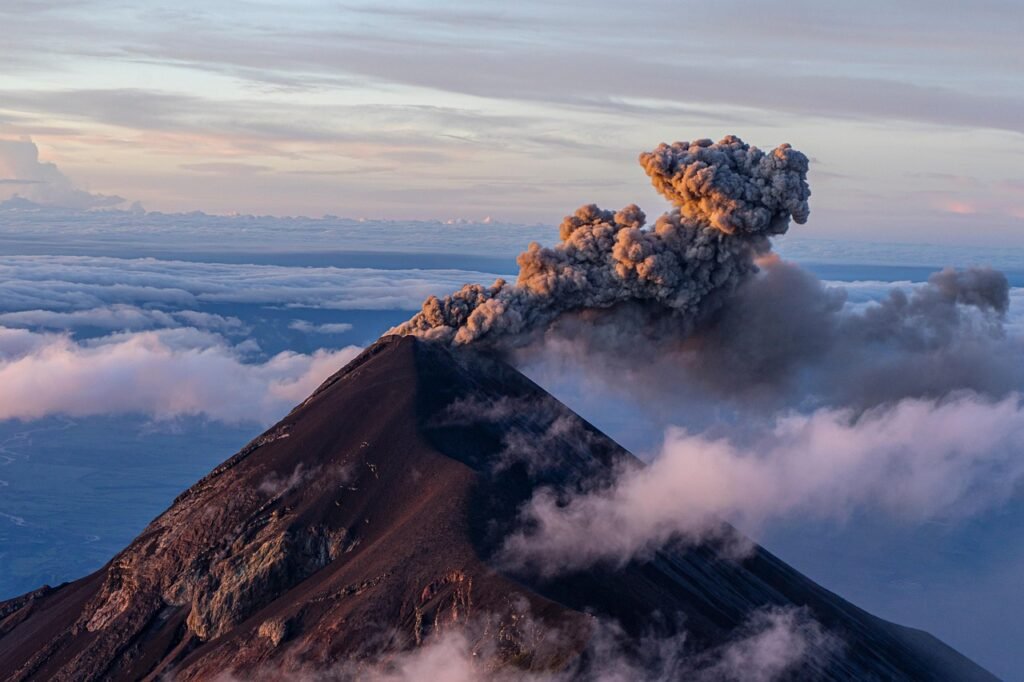Deep beneath the Earth’s surface, something extraordinary happens before many volcanic ions. In the days, weeks, or even months leading up to these explosive events, volcanoes produce mysterious sounds that scientists have learned to decode. These acoustic signals, invisible to the human ear, hold crucial clues about impending ions and have revolutionized how we monitor volcanic activity.
Think of it like nature’s early warning system, where the Earth itself whispers secrets about what’s brewing beneath our feet. Scientists around the world are now listening to these volcanic “songs” with sophisticated equipment, transforming the way we predict and prepare for one of Earth’s most powerful forces.
The Science Behind Volcanic Sounds

Volcanic tremor often precedes or accompanies a volcanic eruption and is often used in conjunction with earthquake swarms as a geophysical warning that an eruption is not far off since it is often the direct result magma forcing its way up toward the surface. These sounds emerge from deep underground processes that most of us never consider.
Sounds from volcanic processes that occur before an eruption primarily come from the pressurization of magma bodies in cracks and conduits, bubble explosions, and the resonating superheated hydrothermal systems near the surface of a volcano. As magma ascends, moving toward the surface, gases build pressure within the magma, forcing cracks and dikes to open and expand through the overlying rocks. The entire process creates a complex symphony of geological activity.
Understanding Harmonic Tremors

Harmonic tremors with frequency 0.1–12 Hz often occur in volcanos related to eruptive phenomena, but they can also be present in volcanoes without any unusual activity. The typical frequency range of harmonic tremors is 0.1–12 Hz. These specific frequencies carry important information about what’s happening beneath the surface.
A volcanic tremor is a continuous seismic signal that lasts minutes to days in duration and is observed during volcanic eruptions or sometimes independently. Most volcanic tremors are represented in a restricted frequency range of 1–9 Hz and with a wide variety of emerging patterns. Scientists have discovered that these patterns aren’t random but follow predictable characteristics that help forecast eruptions.
The high pressures associated with the gas-rich magma within these cracks, pipes and conduits can cause the volume to resonate similar to a pipe organ. The acoustic signal emitting from resonating bodies of gas rich magma, large bubbles, and or high pressure hydrothermal fluids within the volcanic edifice is often referred to as volcanic tremor.
How Volcanoes Create Their Musical Signatures

We suppose that the harmonic tremors are due to the formation of bubbles entrapped in cavities that oscillate converting thermal energy into mechanic energy. This association is quite straightforward because volcanoes are surrounded by hydrothermal reservoirs, namely rock cracks in which vapor or gas bubble are heated by the magma.
Some volcanoes emit sound as a result of magma bubbles vibrating as they’re pushed up through cracks in the Earth’s crust. But in Redoubt’s case, scientists think the earthquake and harmonic tremor happen as magma is forced through a narrow opening under great pressure into the heart of the mountain. Each volcano produces its own unique acoustic fingerprint based on its internal structure and magma characteristics.
The Redoubt Volcano Discovery

The frequency of Redoubt’s harmonic tremor is so high, in fact, that it can’t easily be explained by many of the accepted theories. “The pitch that Redoubt got up to was so much higher than any other volcano that we’ve recorded, and that’s kind of pushed the limits of all the models that were out there,” Hotovec-Ellis said.
Each of these sudden movements results in a small earthquake. As the pressure builds, the quakes get smaller and happen so quickly one after another that the sounds they generate blend into a continuous and ever increasing noise. “So it’s actually the rocks making the sounds,” Hotovec-Ellis said. This groundbreaking research revealed new insights into volcanic processes.
Frequency Changes as Eruption Predictors

The fundamental frequency of the tremor is related to the volume of the resonating body and can change through time causing an effect known as “gliding”. This gliding phenomenon provides scientists with valuable information about changing conditions inside the volcano.
The higher up in the volcano’s chamber the magma is, the higher-pitched the sound is, and the lower the magma in the chamber, the lower the sound. This difference in the sound can tell us how soon the volcano might erupt or even whether a volcano is more active. These frequency changes act like a geological barometer, indicating rising pressure and magma movement.
Infrasound and Long-Distance Detection

When a volcano erupts, it releases energy into the ground in the form of seismic waves and into the atmosphere in the form of acoustic (sound) waves. The majority of the sound from volcanoes is low frequency (below 20 Hz, the threshold of human hearing) and is termed infrasound.
The majority of the sound from volcanoes is low frequency (below 20 Hz, the threshold of human hearing) and is termed infrasound. Nearly all types of volcanic eruptions produce infrasound, and infrasound from large, explosive eruptions can travel up to thousands of miles due to the low amount of energy loss in the atmosphere. This long-distance capability makes infrasound particularly valuable for monitoring remote volcanoes.
Advanced Monitoring Technologies

When sound waves hit the ground, they shake seismometers like earthquake waves. Scientists can now use these sound-induced seismic waves to investigate volcanic activity. Modern technology has transformed how scientists capture and analyze these volcanic sounds.
Because of these monitoring challenges, scientists at the Alaska Volcano Observatory (AVO) have now turned to a phenomenon that is well known but not normally used to detect or observe volcanoes – sound waves that eruptions blast into the air and that later hit the ground and convert into seismic waves. The AVO scientists can use these so-called ground-coupled airwaves (GCAs) to spy on volcanic activity thanks to a new way of teasing acoustic information from seismometers that the scientists are already using to gather ordinary seismic information about volcanoes.
Machine Learning and Pattern Recognition

A machine learning approach is able to identify a precursory tremor signal immediately prior to the 2021 Geldingadalir eruption, which suggests that the apparent lack of precursory tremors before some eruptions may actually be a result of the type of analyses conducted. Here, we demonstrate that unsupervised machine learning methods can automatically uncover hidden details from the continuous seismic signals recorded during Iceland’s 2021 Geldingadalir eruption.
We detect a volcanic tremor sequence three days before the eruption, which may signify impending eruptive activities. Artificial intelligence is now helping scientists identify patterns in volcanic sounds that human analysts might miss, revolutionizing eruption prediction capabilities.
Early Warning Systems in Practice

An increased rate of swelling, especially if accompanied by an increase in sulfur dioxide emissions and harmonic tremors is a high probability sign of an impending event. An increased rate of swelling, especially if accompanied by an increase in sulfur dioxide emissions and harmonic tremors is a high probability sign of an impending event.
Their prediction used research that had been done by Bernard Chouet, a Swiss volcanologist who was working at the United States Geological Survey and who first observed a relation between long-period events and an imminent eruption. The government evacuated tens of thousands of people; 48 hours later, the volcano erupted as predicted. The volcano erupted as predicted, and the early warning system helped prevent casualties. Real-world applications have already saved thousands of lives.
The National Volcano Early Warning System

The National Volcano Warning System (NVEWS) is a national-scale plan to ensure that volcanoes are monitored at levels commensurate to their threats. The National Volcano Warning System (NVEWS) is a national-scale plan to ensure that volcanoes are monitored at levels commensurate to their threats.
The law directed the USGS to modernize monitoring systems at existing volcano observatories to incorporate emerging technologies, such as digital broadband seismometers, real-time global navigation satellite system (GNSS) receivers, radar interferometry, and spectrometry to measure gas emissions from volcanoes. These technologies are intended to provide accurate and real-time measurements of volcanic activity, enabling better assessments of the timing and location of volcanic eruptions. This comprehensive system represents the cutting edge of volcanic monitoring technology.
Future Innovations and Promising Technologies

Using data from the technology, called distributed acoustic sensing (DAS), researchers developed a method to provide warnings up to 30 minutes in advance of lava eruptions. The study shows that DAS can be a useful tool to both study volcanic activity and provide early warnings to the public.
Over the year of the study, DAS collected data on underground volcanic activity, monitoring how the Earth stretches in real time as magma moves around. From this data, the team developed a preliminary early-warning system that gave the public between 30 minutes to several hours of advance notice before an eruption, depending on the nature of the magma intrusion. These breakthrough technologies promise even more accurate predictions in the near future.
Conclusion

The remarkable ability of volcanoes to “sing” has opened up entirely new frontiers in earth science and public safety. From the deep harmonic tremors that resonate through rock chambers to the sophisticated monitoring systems that can detect these signals thousands of miles away, scientists have transformed our understanding of volcanic behavior.
These acoustic early warning signs represent one of humanity’s most successful attempts to predict natural disasters. The combination of traditional seismic monitoring, advanced infrasound detection, machine learning algorithms, and emerging technologies like distributed acoustic sensing continues to improve our ability to forecast eruptions with unprecedented accuracy. What started as mysterious underground rumblings has evolved into a comprehensive scientific discipline that saves lives and protects communities worldwide.
What fascinates you most about volcanoes communicating through sound? Tell us in the comments.

Hi, I’m Andrew, and I come from India. Experienced content specialist with a passion for writing. My forte includes health and wellness, Travel, Animals, and Nature. A nature nomad, I am obsessed with mountains and love high-altitude trekking. I have been on several Himalayan treks in India including the Everest Base Camp in Nepal, a profound experience.




